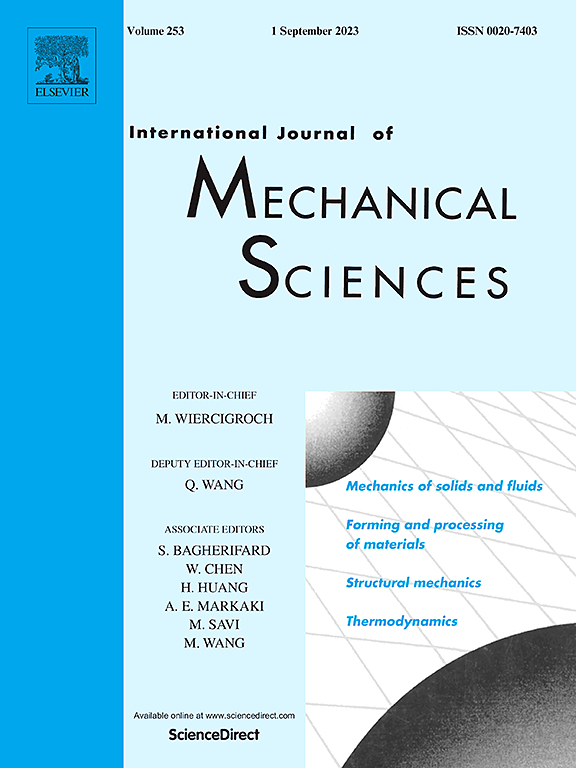Analytical thermal modeling for conventional and in-situ laser assisted turning
IF 7.1
1区 工程技术
Q1 ENGINEERING, MECHANICAL
International Journal of Mechanical Sciences
Pub Date : 2025-02-01
DOI:10.1016/j.ijmecsci.2025.109919
引用次数: 0
Abstract
Cutting heat dynamics play a pivotal role in machining quality and efficiency, making the accurate prediction of cutting temperatures and their distributions essential. This study presents an advanced analytical thermal model designed to predict temperature distribution across the chip, tool, and workpiece during single-point diamond turning and in-situ laser-assisted turning. A novel approach combining an analytical force model with an optimization algorithm is introduced to precisely calculate heat source intensity. The model incorporates the heat intensity distribution along the chip-tool interface, considering the effects of the sticking and sliding zones. Additionally, a new method for calculating the temperature distribution on the tool, caused by a crescent-shaped stationary heat source, is proposed. To enhance accuracy, the model accounts for temperature-dependent thermal conductivity and diffusivity of the workpiece material through iterative refinement. A high-order polynomial fitting is employed to streamline the determination of heat partition ratios, ensuring consistency in temperature predictions for both moving and stationary heat sources. The proposed models are validated through comparisons with infrared imaging and finite element method simulations, providing a robust theoretical framework for predicting temperature behavior in ultra-precision and precision turning processes.

求助全文
约1分钟内获得全文
求助全文
来源期刊

International Journal of Mechanical Sciences
工程技术-工程:机械
CiteScore
12.80
自引率
17.80%
发文量
769
审稿时长
19 days
期刊介绍:
The International Journal of Mechanical Sciences (IJMS) serves as a global platform for the publication and dissemination of original research that contributes to a deeper scientific understanding of the fundamental disciplines within mechanical, civil, and material engineering.
The primary focus of IJMS is to showcase innovative and ground-breaking work that utilizes analytical and computational modeling techniques, such as Finite Element Method (FEM), Boundary Element Method (BEM), and mesh-free methods, among others. These modeling methods are applied to diverse fields including rigid-body mechanics (e.g., dynamics, vibration, stability), structural mechanics, metal forming, advanced materials (e.g., metals, composites, cellular, smart) behavior and applications, impact mechanics, strain localization, and other nonlinear effects (e.g., large deflections, plasticity, fracture).
Additionally, IJMS covers the realms of fluid mechanics (both external and internal flows), tribology, thermodynamics, and materials processing. These subjects collectively form the core of the journal's content.
In summary, IJMS provides a prestigious platform for researchers to present their original contributions, shedding light on analytical and computational modeling methods in various areas of mechanical engineering, as well as exploring the behavior and application of advanced materials, fluid mechanics, thermodynamics, and materials processing.
 求助内容:
求助内容: 应助结果提醒方式:
应助结果提醒方式:


